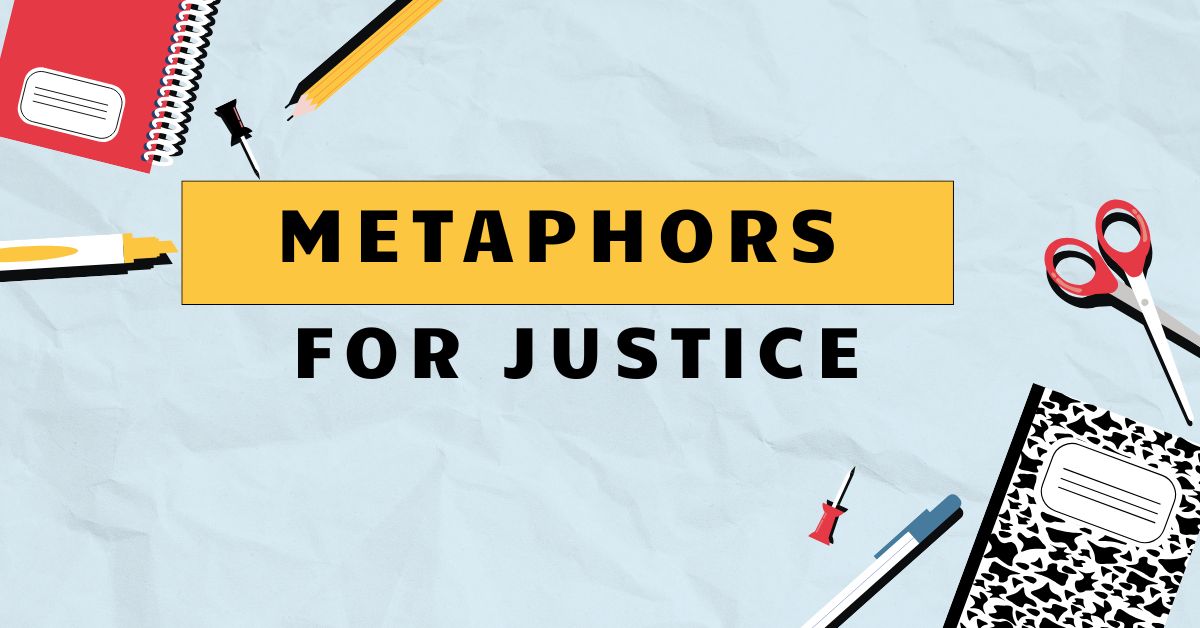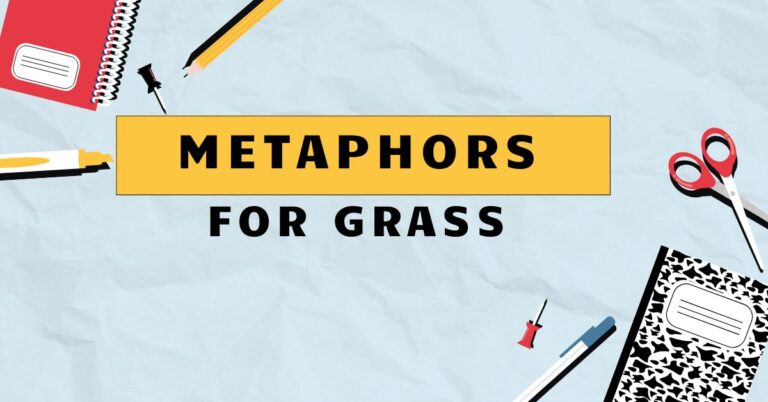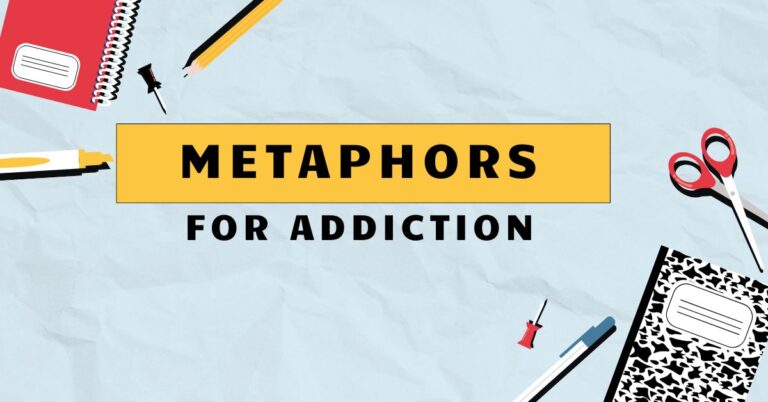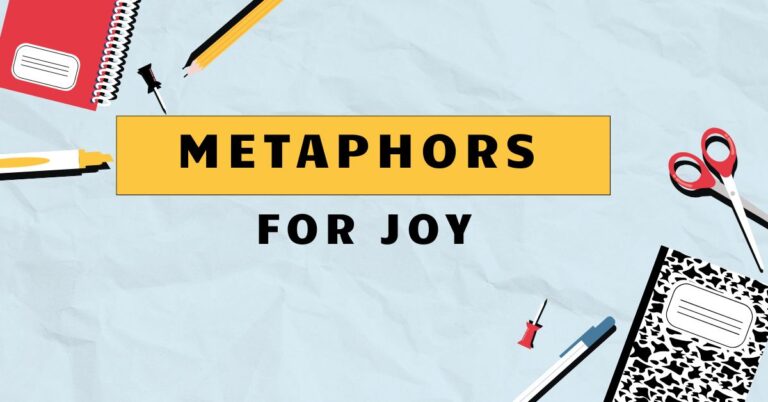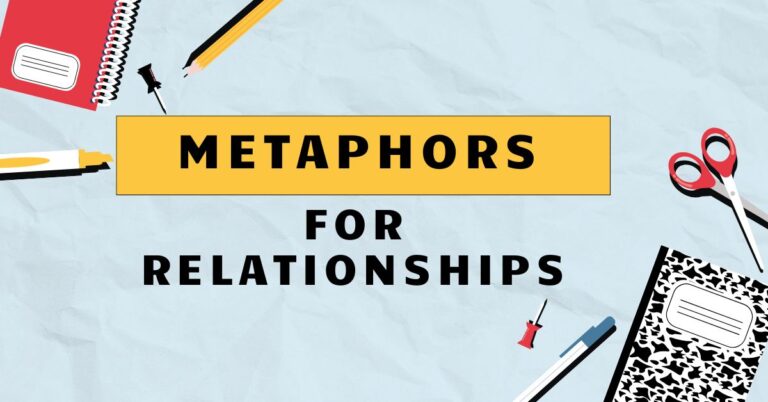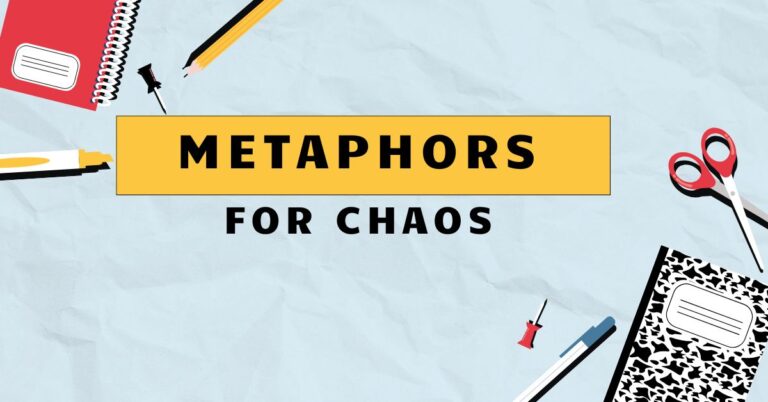41 Justice Metaphors: Understanding Figurative Language in Law
Metaphors for justice are powerful tools that shape our understanding and perception of legal concepts. They allow us to translate abstract ideas into more relatable and tangible terms, influencing how we interpret laws, ethical principles, and the overall judicial process.
Understanding these metaphors is crucial for anyone involved in law, from students to seasoned professionals, as it enhances critical thinking, sharpens communication skills, and provides deeper insights into the cultural and philosophical underpinnings of justice. This article provides a comprehensive exploration of justice metaphors, offering valuable knowledge for both language enthusiasts and legal scholars.
Table of Contents
- Introduction
- Definition of Metaphors for Justice
- Structural Breakdown of Justice Metaphors
- Types and Categories of Justice Metaphors
- Examples of Justice Metaphors
- Usage Rules for Justice Metaphors
- Common Mistakes When Using Justice Metaphors
- Practice Exercises
- Advanced Topics in Justice Metaphors
- Frequently Asked Questions (FAQ)
- Conclusion
Definition of Metaphors for Justice
A metaphor for justice is a figurative expression that uses one concept or idea to represent or explain the abstract notion of justice. Unlike similes, which make explicit comparisons using words like “like” or “as,” metaphors directly equate justice with something else, enriching our understanding and conveying complex meanings in concise, impactful language.
These metaphors are not merely decorative; they reflect deeply ingrained cultural values and shape legal discourse.
Metaphors serve as powerful tools in legal rhetoric, influencing how we perceive fairness, rights, and the judicial process. They can evoke emotional responses, persuade audiences, and simplify intricate legal concepts.
The effectiveness of a justice metaphor lies in its ability to resonate with the audience’s existing knowledge and beliefs, creating a shared understanding of justice.
In legal contexts, metaphors help lawyers, judges, and policymakers frame arguments, justify decisions, and communicate complex ideas to the public. By understanding the underlying meanings and implications of these metaphors, legal professionals can engage in more effective and persuasive communication, ultimately contributing to a more just and equitable society.
Justice metaphors are essential for shaping public opinion and influencing legal reforms.
Structural Breakdown of Justice Metaphors
Understanding the structure of justice metaphors involves analyzing their component parts and how they interact to create meaning. A typical metaphor consists of two main elements: thetenor(the subject being described, in this case, justice) and thevehicle(the concept used to represent the subject).
The vehicle carries the metaphorical meaning and provides new insights into the tenor.
The effectiveness of a metaphor depends on the relationship between the tenor and the vehicle. A strong metaphor establishes a clear and relevant connection between the two, allowing the audience to readily grasp the intended meaning.
The shared attributes between the tenor and vehicle create resonance and enhance understanding. For instance, “Justice is a beacon” uses ‘beacon’ as the vehicle, implying justice guides and illuminates.
Analyzing the context in which a metaphor is used is also crucial. The surrounding language, cultural background, and intended audience all influence how the metaphor is interpreted.
A metaphor that resonates in one context may be ineffective or even misleading in another. Legal scholars often debate the nuances of these metaphors, exploring how they subtly shape legal interpretations and outcomes.
Examining the historical use of metaphors provides insight into how perceptions of justice have evolved over time.
Types and Categories of Justice Metaphors
Justice metaphors can be categorized based on the specific concepts they use to represent justice. These categories provide a framework for understanding the diverse ways in which justice is conceptualized and communicated.
Justice as Balance
Balance metaphors portray justice as a state of equilibrium or fairness, often emphasizing the need to weigh competing interests and ensure that all parties receive equitable treatment. This category includes images of scales, even distribution, and proportional responses.
The concept of balance suggests that justice requires careful consideration of all relevant factors and a commitment to avoiding bias or favoritism. It implies that every action has a corresponding reaction and that fairness is achieved when these are appropriately aligned.
The metaphor of balance is deeply ingrained in legal systems worldwide, symbolizing impartiality and fairness.
Justice as Blindness
Blindness metaphors emphasize the impartiality and objectivity of justice, suggesting that it should be administered without regard to personal characteristics, social status, or other irrelevant factors. This metaphor is often represented by the image of Lady Justice wearing a blindfold.
The idea of blindness underscores the importance of treating all individuals equally under the law, regardless of their background or circumstances. It implies a commitment to fairness and a rejection of prejudice or discrimination.
This metaphor reinforces the principle that justice should be applied uniformly to all members of society. The concept of blindness is central to ensuring fair trials and equitable legal outcomes.
Justice as Scales
Scales metaphors depict justice as a mechanism for weighing evidence and determining the appropriate outcome. The image of scales represents the careful consideration of different perspectives and the need to balance competing claims.
The scales symbolize the process of evaluating evidence and arguments to reach a just conclusion. They suggest that justice involves a careful assessment of all relevant factors and a determination of which side carries the most weight.
This metaphor is closely linked to the concept of balance and underscores the importance of impartiality in the legal system. The scales serve as a visual reminder of the need for objectivity and fairness in legal proceedings.
Justice as Light
Light metaphors portray justice as a source of illumination or clarity, suggesting that it reveals the truth and exposes wrongdoing. This category includes images of beacons, spotlights, and enlightenment.
The concept of light implies that justice brings clarity and understanding to complex situations, helping to uncover hidden truths and expose deceit. It suggests that justice shines a light on injustice, revealing the need for reform and accountability.
This metaphor is often used to describe the role of the legal system in promoting transparency and upholding the rule of law. Light as a metaphor signifies truth and the exposure of corruption.
Justice as Healing
Healing metaphors depict justice as a process of restoring harmony and repairing broken relationships. This category includes images of mending, reconciliation, and restoration.
The idea of healing suggests that justice is not simply about punishment or retribution but also about addressing the underlying causes of conflict and promoting reconciliation between parties. It implies a commitment to restoring wholeness and repairing the damage caused by injustice.
This metaphor is often used in the context of restorative justice, which emphasizes the importance of healing and reconciliation in addressing crime and conflict. Healing fosters community and restores social harmony.
Justice as a Container
Container metaphors frame justice as a space or structure that holds, protects, or constrains. Examples include “the halls of justice,” “within the bounds of the law,” and “a framework for justice.”
These metaphors suggest that justice provides a defined area for actions and decisions, ensuring order and predictability. The container can be seen as both protective, sheltering the innocent, and restrictive, limiting unjust behavior.
Understanding this metaphor helps to visualize how legal systems create boundaries and maintain social order, providing a structured environment for resolving disputes and upholding rights. The container metaphor highlights the structured nature of the legal system.
Justice as a Journey
Journey metaphors represent justice as a process of movement, progress, and transformation. Phrases like “the path to justice,” “seeking justice,” and “a long road to justice” illustrate this concept.
These metaphors emphasize the dynamic and often challenging nature of achieving justice, highlighting the steps, obstacles, and perseverance required. The journey implies a sense of purpose and direction, suggesting that justice is not a static state but an ongoing pursuit.
This perspective underscores the importance of continuous effort and adaptation in the quest for fairness and equity. The journey metaphor emphasizes the ongoing pursuit of justice.
Examples of Justice Metaphors
The following tables provide extensive examples of justice metaphors, categorized by type, to illustrate their diverse applications and meanings. These examples demonstrate how metaphors enrich our understanding of justice and shape legal discourse.
Table 1: Examples of Justice as Balance
This table shows examples of justice being described as a balance.
| Metaphor | Explanation |
|---|---|
| “The scales of justice must be balanced.” | Emphasizes the need for equilibrium and fairness in legal proceedings. |
| “Justice requires a level playing field.” | Suggests that all parties should have equal opportunities and advantages. |
| “The law seeks to restore equilibrium.” | Indicates that justice aims to correct imbalances and restore harmony. |
| “Fairness is the fulcrum of justice.” | Highlights the importance of balance as the central point of justice. |
| “Justice demands a proportional response.” | Suggests that punishment should be commensurate with the crime. |
| “The judge weighed the evidence carefully.” | Implies a careful balancing of arguments and facts. |
| “The legal system strives for equilibrium.” | Highlights the constant effort to maintain balance in the legal framework. |
| “Justice is about finding the right measure.” | Suggests that fairness involves precise calibration and assessment. |
| “The verdict aimed to restore balance to the community.” | Indicates that the legal outcome sought to heal societal rifts. |
| “Equality is the cornerstone of balanced justice.” | Highlights the fundamental role of equality in achieving fairness. |
| “The scales of justice were tipped in her favor.” | Indicates an imbalance, suggesting a bias or unfair advantage. |
| “Restorative justice seeks to re-balance the harm done.” | Emphasizes the goal of repairing the damage caused by injustice. |
| “The court aimed to provide a balanced judgment.” | Highlights the intention to deliver a fair and impartial decision. |
| “Justice is the art of balancing competing rights.” | Suggests that fairness involves navigating conflicting claims. |
| “The legal process seeks to find a balanced solution.” | Indicates a commitment to finding equitable resolutions. |
| “The judge ensured a level playing field for both sides.” | Highlights the role of the judge in maintaining fairness. |
| “The law is designed to balance individual freedoms and public safety.” | Illustrates the need to reconcile competing interests. |
| “Justice requires a careful balancing act.” | Emphasizes the delicate nature of achieving fairness. |
| “The court’s decision aimed to restore societal equilibrium.” | Indicates that the legal outcome sought to heal societal rifts. |
| “Balance is the foundation of a just society.” | Highlights the fundamental role of balance in achieving fairness. |
| “The trial was about balancing the evidence.” | Highlights the process of weighing the facts. |
| “Justice is a quest for equilibrium.” | Portrays justice as a continuous search for balance. |
| “The legal system is designed to ensure a fair balance.” | Emphasizes the system’s role in promoting fairness. |
Table 2: Examples of Justice as Blindness
This table shows examples of justice being described as blind.
| Metaphor | Explanation |
|---|---|
| “Justice is blind.” | Emphasizes impartiality and objectivity, suggesting that justice should be administered without bias or prejudice. |
| “The blindfold of justice ensures fairness.” | Highlights the role of impartiality in promoting equitable outcomes. |
| “Justice sees no color, race, or creed.” | Underscores the principle of equality before the law. |
| “Blind justice treats everyone the same.” | Emphasizes the uniform application of the law, irrespective of personal characteristics. |
| “The law is blind to status and wealth.” | Indicates that social standing and financial resources should not influence legal outcomes. |
| “Justice must be administered without sight of personal connections.” | Highlights the need to avoid favoritism and nepotism. |
| “The scales are blind, weighing only the facts.” | Emphasizes that evidence, rather than personal attributes, should determine the outcome. |
| “Justice doesn’t peek; it judges impartially.” | Reinforces the idea that fairness requires a lack of bias or preconceptions. |
| “The blindfold symbolizes equality under the law.” | Connects the symbol of blindness to the principle of equal treatment. |
| “Justice’s blindness ensures an unbiased verdict.” | Highlights the role of impartiality in achieving fair judgments. |
| “The court must be blind to public opinion.” | Suggests that legal decisions should be based on law and evidence, not popular sentiment. |
| “Justice’s blindness protects against discrimination.” | Emphasizes the role of impartiality in preventing unfair treatment. |
| “The law is blind, ensuring equal treatment for all.” | Reinforces the principle of equality before the law. |
| “Blind justice seeks to eliminate prejudice.” | Highlights the goal of removing bias from legal proceedings. |
| “The blindfold represents the absence of favoritism.” | Connects the symbol of blindness to the rejection of bias. |
| “Justice doesn’t see; it only considers the evidence.” | Emphasizes that evidence, rather than personal attributes, should determine the outcome. |
| “The blindfold of justice ensures impartiality.” | Highlights the role of impartiality in promoting equitable outcomes. |
| “Justice is blind to social standing.” | Indicates that social standing should not influence legal outcomes. |
| “The law is blind to wealth and power.” | Indicates that wealth and power should not influence legal outcomes. |
| “Justice must be blind to personal feelings.” | Highlights the need to avoid emotional bias. |
| “The trial should be blind to external pressures.” | Suggests that legal decisions should be free from outside influence. |
| “Justice aims to be blind to irrelevant factors.” | Emphasizes the focus on relevant evidence and law. |
| “The blindfold ensures that justice is served equally.” | Reinforces the principle of equal treatment under the law. |
Table 3: Examples of Justice as Light
This table shows examples of justice being described as light.
| Metaphor | Explanation |
|---|---|
| “Justice is a beacon of hope.” | Portrays justice as a source of guidance and inspiration. |
| “Truth shines a light on justice.” | Suggests that justice is revealed through the discovery of truth. |
| “The light of justice exposes corruption.” | Indicates that justice uncovers and reveals wrongdoing. |
| “Justice illuminates the path to fairness.” | Highlights the role of justice in guiding society towards equitable outcomes. |
| “The courtroom is a spotlight on truth.” | Emphasizes the role of legal proceedings in uncovering the facts. |
| “Justice brings clarity to complex issues.” | Suggests that justice simplifies and clarifies complicated situations. |
| “The lamp of justice guides our decisions.” | Portrays justice as a guiding principle for legal judgments. |
| “Justice casts a shadow on injustice.” | Indicates that justice highlights and condemns unfair practices. |
| “Enlightenment comes through justice.” | Connects justice to the attainment of knowledge and understanding. |
| “The verdict shone a light on the truth.” | Highlights the role of the judgment in revealing the facts. |
| “Justice is the light at the end of the tunnel.” | Portrays justice as a source of hope in difficult situations. |
| “The torch of justice is passed down through generations.” | Highlights the enduring legacy of justice. |
| “Justice illuminates the dark corners of society.” | Indicates that justice reveals hidden injustices. |
| “The beacon of justice guides us towards fairness.” | Highlights the role of justice in guiding society towards equitable outcomes. |
| “Truth is the sunlight of justice.” | Suggests that justice flourishes in the presence of truth. |
| “Justice is the guiding light of the legal system.” | Portrays justice as a fundamental principle of the legal framework. |
| “The light of justice reveals hidden truths.” | Indicates that justice uncovers concealed facts. |
| “Justice shines brightly in a fair trial.” | Highlights the role of fair legal proceedings in revealing the truth. |
| “The lamp of justice casts light on wrongdoing.” | Indicates that justice exposes and condemns unethical behavior. |
| “Justice is the dawn of a new era.” | Portrays justice as a symbol of positive change and progress. |
| “The light of justice pierces through deceit.” | Suggests that justice can uncover and expose deception. |
| “Justice serves as a guiding star.” | Portrays justice as a reliable source of direction and hope. |
| “The beacon of justice calls for truth.” | Highlights the importance of truth in achieving justice. |
Usage Rules for Justice Metaphors
Using justice metaphors effectively requires careful consideration of context, audience, and intended meaning. While metaphors can enhance communication and convey complex ideas, they can also be misinterpreted or misused if not employed thoughtfully.
Clarity:Ensure that the metaphor is clear and easily understood by the intended audience. Avoid using obscure or overly complex metaphors that may confuse or alienate listeners.
A clear metaphor enhances understanding and strengthens the message.
Relevance:The metaphor should be relevant to the specific context and legal issue being discussed. A relevant metaphor resonates with the audience and reinforces the intended message.
Irrelevant metaphors detract from the argument and confuse the issue.
Consistency:Maintain consistency in the use of metaphors throughout the discussion or argument. Avoid mixing metaphors or shifting between different figurative expressions, as this can create confusion and undermine the overall message.
Consistent use of metaphors strengthens the argument and enhances credibility.
Appropriateness:Consider the appropriateness of the metaphor for the specific audience and setting. Avoid using metaphors that may be offensive, insensitive, or culturally inappropriate.
An appropriate metaphor respects the audience and enhances the effectiveness of the communication.
Avoid Clichés:While some common metaphors are widely understood, overuse can diminish their impact. Strive for originality and creativity in your use of metaphors to make your communication more engaging and memorable.
Fresh metaphors capture attention and enhance understanding.
Common Mistakes When Using Justice Metaphors
Even experienced speakers and writers can make mistakes when using justice metaphors. Being aware of these common errors can help you avoid them and use figurative language more effectively.
Mixing Metaphors: Combining unrelated metaphors can create confusion and undermine the clarity of your message.
- Incorrect: “Justice is a beacon of hope that must navigate stormy waters.”
- Correct: “Justice is a beacon of hope guiding us through darkness.”
Overusing Clichés: Relying too heavily on tired, overused metaphors can make your writing or speaking sound unoriginal and uninspired.
- Incorrect: “Justice is blind, as everyone knows.”
- Correct: “Justice, impartial and unbiased, considers only the facts.”
Misinterpreting Metaphors: Failing to fully understand the implications and nuances of a metaphor can lead to miscommunication and unintended meanings.
- Incorrect: Using “Justice is a sword” to imply only punishment, ignoring its protective aspects.
- Correct: Using “Justice is a sword” to represent both the power to punish and the duty to protect.
Inappropriate Tone: Using a metaphor that doesn’t fit the tone or context of the discussion can be jarring and ineffective.
- Incorrect: In a serious legal argument, saying “Justice is a walk in the park.”
- Correct: In a serious legal argument, saying “Justice is a rigorous pursuit requiring dedication.”
Practice Exercises
Test your understanding of justice metaphors with these exercises.
Exercise 1: Identifying Metaphors
Identify the justice metaphor in each sentence.
| Question | Answer |
|---|---|
| 1. The halls of justice echoed with the pursuit of truth. | Justice as a container. |
| 2. Justice is the compass guiding our moral decisions. | Justice as a guide. |
| 3. The scales of justice must always be balanced. | Justice as balance. |
| 4. The blindfold of justice ensures fairness for all. | Justice as blindness. |
| 5. Justice is a shield protecting the innocent. | Justice as protection. |
| 6. The path to justice is often long and arduous. | Justice as a journey. |
| 7. Justice shines a light on corruption. | Justice as light. |
| 8. The court sought to heal the wounds of society. | Justice as healing. |
| 9. Justice is the cornerstone of a fair society. | Justice as a foundation. |
| 10. The framework of justice must be strong and resilient. | Justice as a structure. |
Exercise 2: Completing the Metaphor
Complete the following sentences using an appropriate justice metaphor.
| Question | Answer |
|---|---|
| 1. Justice is like a ________, guiding us through the darkness. | beacon. |
| 2. The pursuit of justice is a ________, filled with challenges. | journey. |
| 3. Justice must be ________, treating everyone equally. | blind. |
| 4. The legal system is a ________, containing the rules and laws. | framework. |
| 5. The goal of justice is to ________ the harm done. | heal. |
| 6. Justice acts as a ________, safeguarding individual rights. | shield. |
| 7. The scales of justice should always be ________. | balanced. |
| 8. Justice, like the sun, ________ the truth. | illuminates. |
| 9. The foundation of a just society is ________. | justice. |
| 10. As a ________, justice restores equilibrium. | balance. |
Exercise 3: Correcting Misused Metaphors
Correct the following sentences that contain misused justice metaphors.
| Question | Answer |
|---|---|
| 1. Justice is a stormy walk in the park. | Justice is a long and arduous journey. |
| 2. The blindfold of justice sees everything. | The blindfold of justice ensures impartiality. |
| 3. Justice is a balanced sword. | Justice is a balanced scale. |
| 4. Justice contains a beacon of balance. | Justice is a beacon of hope. |
| 5. Healing is the blindfold of justice. | Healing is an aspect of restorative justice. |
| 6. The scale of justice is a journey. | The journey to justice involves the use of scales to weigh evidence. |
| 7. The light of blindness reveals all. | The light of justice reveals all. |
| 8. The container of healing brings fairness to all. | The process of healing restores fairness. |
| 9. Balance journeys through the halls of justice. | The pursuit of justice is a journey. |
| 10. The framework of light ensures all are healed. | The light of justice ensures fairness. |
Advanced Topics in Justice Metaphors
For advanced learners, delving deeper into the philosophical and cultural underpinnings of justice metaphors can provide valuable insights. Exploring how different cultures and legal traditions employ metaphors to conceptualize justice can reveal diverse perspectives and values.
Comparative Analysis:Compare and contrast the use of justice metaphors in different legal systems. For example, examine how common law and civil law traditions utilize different figurative expressions to represent justice and fairness.
Analyzing these differences can highlight the cultural and historical influences that shape legal discourse.
Philosophical Implications:Explore the philosophical implications of justice metaphors. Consider how different metaphors reflect competing theories of justice, such as retributive justice, distributive justice, and restorative justice.
Analyzing these implications can deepen your understanding of the ethical and moral dimensions of legal concepts.
Critical Analysis:Critically analyze the potential biases and limitations of justice metaphors. Consider how certain metaphors may reinforce existing power structures or perpetuate inequalities.
Examining these limitations can promote more nuanced and equitable approaches to legal communication and interpretation.
Metaphorical Evolution:Research the historical evolution of justice metaphors. Trace how the meanings and connotations of specific metaphors have changed over time, reflecting shifts in cultural values and legal norms.
Understanding this evolution can provide valuable insights into the dynamic nature of justice.
Frequently Asked Questions (FAQ)
Here are some frequently asked questions about justice metaphors.
- What is the difference between a metaphor and a simile?
A metaphor directly equates two unlike things to suggest a similarity, while a simile uses “like” or “as” to make a comparison. For example, “Justice is a beacon” (metaphor) versus “Justice is like a beacon” (simile). The metaphor is a more direct statement of equivalence.
- Why are metaphors important in legal language?
Metaphors help simplify complex legal concepts, making them more accessible and understandable to a wider audience. They also add persuasive power to arguments and evoke emotional responses, influencing perceptions of justice and fairness. Metaphors make abstract concepts more tangible and relatable.
- Can metaphors be misleading or harmful?
Yes, if used carelessly or with malicious intent. Metaphors can oversimplify complex issues, promote biased perspectives, or perpetuate harmful stereotypes. It’s important to critically evaluate metaphors and consider their potential implications. Misused metaphors can distort understanding and promote injustice.
- How do different cultures use justice metaphors differently?
Different cultures may emphasize different aspects of justice based on their values and traditions. For example, some cultures may prioritize restorative justice and use metaphors of healing and reconciliation, while others may focus on retributive justice and use metaphors of punishment and retribution. Cultural context shapes the meaning and application of justice metaphors.
- What is the role of justice metaphors in shaping public opinion?
Justice metaphors play a significant role in shaping public opinion by influencing how people perceive legal issues and the fairness of the legal system. By framing justice in certain ways, metaphors can sway public sentiment and influence support for legal reforms or policies. Effective use of metaphors can mobilize public opinion and drive social change.
- How can I improve my ability to use justice metaphors effectively?
Practice using metaphors in your writing and speaking, paying attention to clarity, relevance, and appropriateness. Read widely and analyze how others use metaphors in legal and political discourse. Seek feedback from others on your use of metaphors and be open to constructive criticism. Consistent practice and critical reflection will enhance your metaphorical skills.
- What are some examples of justice metaphors in popular culture?
Examples include movies depicting courtroom dramas, television shows focusing on legal battles, and literature exploring themes of justice and injustice. These cultural representations often employ metaphors to convey complex legal concepts and evoke emotional responses in audiences. Popular culture reflects and shapes our understanding of justice metaphors.
- How do justice metaphors influence legal interpretation?
Justice metaphors can subtly influence legal interpretation by shaping the way judges, lawyers, and policymakers understand and apply the law. Certain metaphors can emphasize particular aspects of justice, leading to different interpretations and outcomes. Awareness of these influences can promote more balanced and equitable legal decisions. Legal interpretation is shaped by the underlying metaphors used to frame justice.
- Why is it important to avoid clichés when using justice metaphors?
Overused metaphors lose their impact and can make your writing or speaking sound unoriginal and uninspired. Fresh, creative metaphors capture attention, enhance understanding, and make your message more memorable. Avoiding clichés demonstrates thoughtfulness and creativity in your communication.
- How can justice metaphors be used to promote social justice?
Justice metaphors can be used to promote social justice by framing legal and political issues in ways that highlight inequalities and injustices. By evoking empathy and promoting understanding, metaphors can inspire action and mobilize support for social change. Effective use of metaphors can be a powerful tool for advancing social justice goals.
Conclusion
Understanding metaphors for justice is essential for anyone seeking to engage with legal concepts in a meaningful way. These metaphors shape our perceptions, influence legal discourse, and ultimately impact the pursuit of fairness and equity.
By recognizing the power and nuances of these figurative expressions, we can become more effective communicators, critical thinkers, and advocates for justice.
Continue to explore the diverse ways in which justice is conceptualized and communicated through metaphors. Pay attention to the context, audience, and intended meaning when using these expressions.
Be mindful of the potential biases and limitations of metaphors and strive for clarity, relevance, and appropriateness in your language. With careful consideration and practice, you can harness the power of justice metaphors to promote a more just and equitable society.
Remember that language is a dynamic tool, and the metaphors we use to describe justice will continue to evolve alongside our understanding of fairness and rights. Stay curious, stay engaged, and continue to explore the rich and complex world of justice metaphors.

